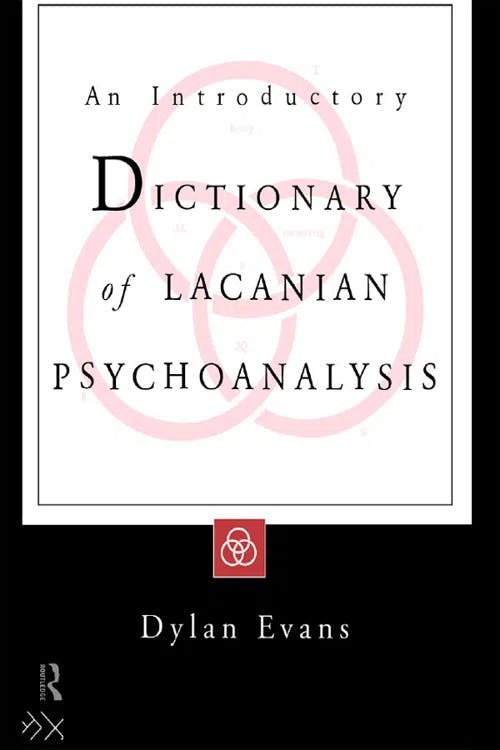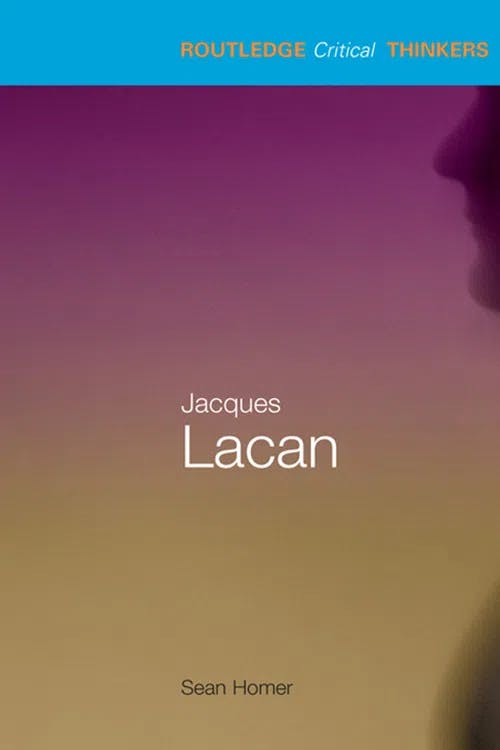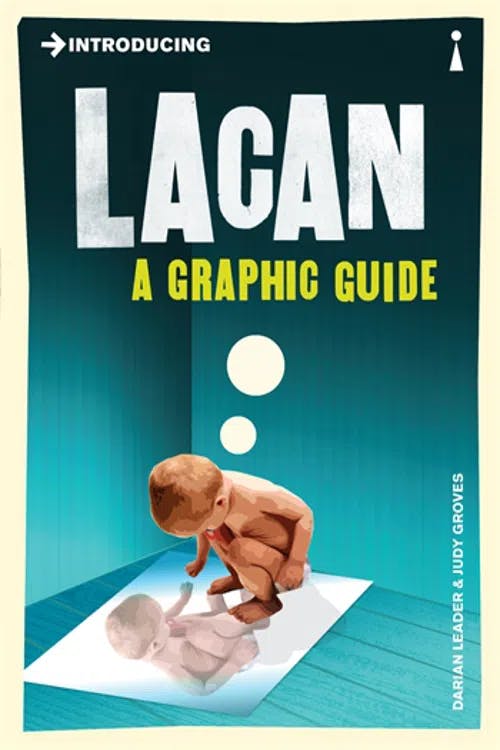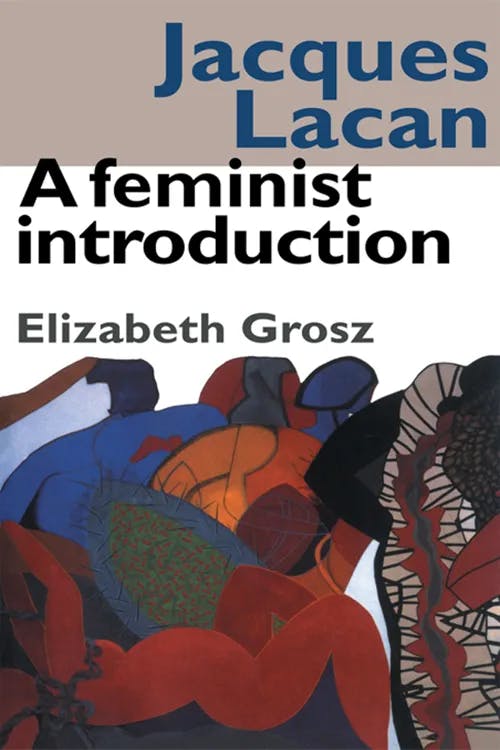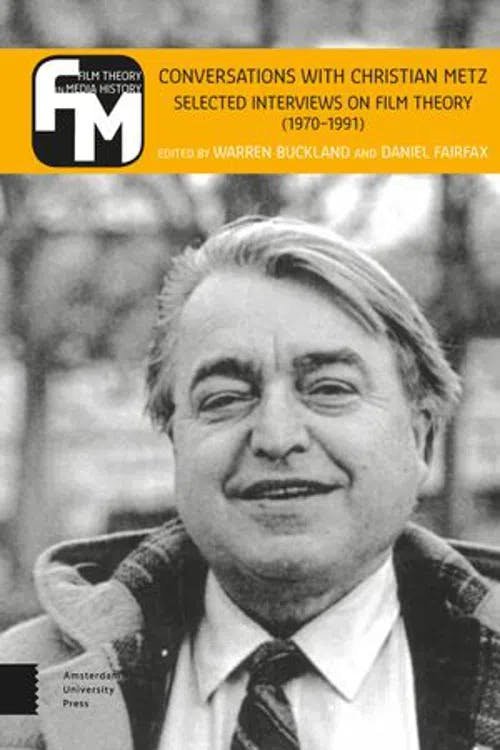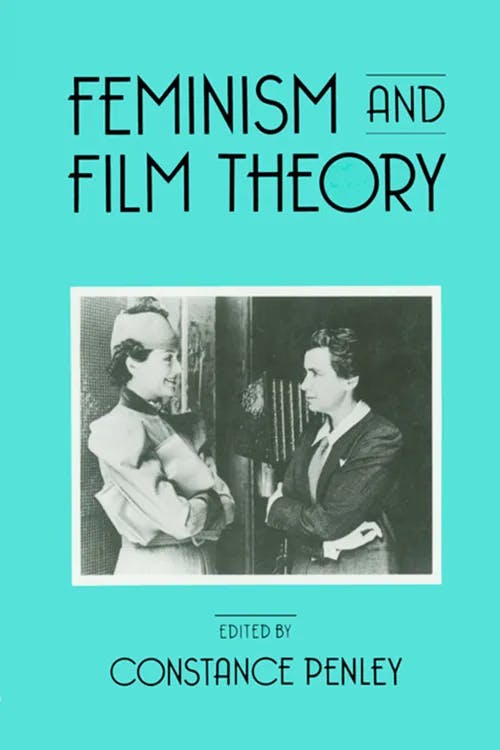What is Lacan’s Mirror Stage?
MSt, Women's, Gender & Sexuality Studies (University of Oxford)
Date Published: 10.08.2023,
Last Updated: 26.10.2023
Share this article
Defining Lacan’s mirror stage
Have you ever watched a baby see its reflection in a mirror? The child might smile or laugh, reacting playfully or with a sense of wonder. This moment inspires Lacan’s mirror stage.
The “mirror stage” (also called the “mirror phase”) is a developmental stage theorized by psychoanalyst Jacques Lacan. Occurring between six and eighteen months, Lacan’s mirror stage is the process during which we understand ourselves as individuals, whole and distinct from the people around us, and begin taking active part in sign systems (language, culture, normative behavior, etc.). The mirror stage marks our entry into the realms of the Imaginary and the Symbolic and the development of the ego and the Subject — the “I.”
Lacan’s mirror stage is inspired by Henri Wallon’s developmental psychology. Wallon described how, compared to other animals, humans are born prematurely, requiring up to eighteen months of development before we can stand, walk, handle objects usefully, or understand our body as a whole in its environment. Wallon observed that when faced with their reflections, young primates like chimpanzees quickly lost interest with or tried to attack the images, while human children remained fascinated. Lacan theorized that, by seeing an image of the self, perceiving itself as others do, the child develops a sense of its body and its identity.
The mirror stage was Lacan’s first original piece of psychoanalytic theory, and he returned to the idea throughout his career. The mirror stage developed layers of meaning as Lacan reconsidered it in light of his other theories. His concepts of the self and other, the ego and the Subject, and the realms of existence (the Real, the Imaginary, and the Symbolic) all relate in some way to the mirror stage.
While the mirror stage may seem to refer to a specific moment, it is more metaphorical than literal. By the end of his career, Lacan viewed the mirror stage as a paradigm or structure of subjectivity rather than a quantifiable moment in human development.
Who is Jacques Lacan?
Jacques Marie Émile Lacan (1901–1981) was a French philosopher, psychoanalyst, and theorist. He began pursuing medicine in 1920 and specialized in psychiatry in 1926. As a young man, Lacan was a figure in Paris’s intellectual and artistic circles, frequenting the legendary Shakespeare and Co. bookstore, befriending surrealist and avant-garde artists like André Breton and Salvador Dali, and becoming Picasso’s personal physician.
Lacan’s psychoanalytic theories explore ideas like paranoia, narcissism, neurosis, the ego, and alienation. Known for combining Freud’s psychoanalytic theory and key elements of structuralism including Saussure’s theories of linguistics, Lacan became a leading figure in the structuralist movement of the 1950s and 1960s and in broader twentieth-century critical thought (see Lacan and Jacques Lacan for more of his theories). He not only revolutionized psychoanalysis (earning him the nickname “the French Freud”) but also influenced other areas of study such as literature and film.
The mirror stage: a deeper look
Lacan first introduced “the mirror stage” at the 1936 International Congress of Psychoanalysis, later reworking the article and presenting on the mirror stage again in 1949. Lacan writes,
We have only to understand the mirror stage as an identification, in the full sense that analysis gives to the term: namely, the transformation that takes place in the subject when he assumes an image – whose predestination to this phase-effect is sufficiently indicated by the use, in analytic theory, of the ancient term imago. (1966, [2020])
Jacques Lacan
We have only to understand the mirror stage as an identification, in the full sense that analysis gives to the term: namely, the transformation that takes place in the subject when he assumes an image – whose predestination to this phase-effect is sufficiently indicated by the use, in analytic theory, of the ancient term imago. (1966, [2020])
Lacan emphasizes that the mirror stage is about identification. It is, as Lionel Bailly writes, “the first time the child thinks of itself as ‘I’ in relationship with an image that it starts to understand as representing itself” (Lacan, 2012). When this identification occurs, the child often becomes enraptured by its image. The mirror stage, involving fascination with one’s own image, is thus related to Freud’s idea of primary narcissism. The process of identifying with one’s image is the “founding act, leading to the formation of the ego and the perception of the Subject” (Bailly, 2012).
Dylan Evans describes the steps of the mirror stage that lead to ego formation:
The baby sees its own image as whole [...], and the synthesis of this image produces a sense of contrast with the uncoordination of the body, which is experienced as a FRAGMENTED BODY; this contrast is first felt by the infant as a rivalry with its own image, because the wholeness of the image threatens the subject with fragmentation, and the mirror stage thereby gives rise to an aggressive tension between the subject and the image [...]. In order to resolve this aggressive tension, the subject identifies with the image; this primary identification with the counterpart is what forms the ego. (2006)
Dylan Evans
The baby sees its own image as whole [...], and the synthesis of this image produces a sense of contrast with the uncoordination of the body, which is experienced as a FRAGMENTED BODY; this contrast is first felt by the infant as a rivalry with its own image, because the wholeness of the image threatens the subject with fragmentation, and the mirror stage thereby gives rise to an aggressive tension between the subject and the image [...]. In order to resolve this aggressive tension, the subject identifies with the image; this primary identification with the counterpart is what forms the ego. (2006)
Evans emphasizes a core element of the mirror stage: the understanding of the body as a whole that exists in the world rather than as fragmented parts.
While the mirror stage is about identification, it is also about alienation. It is, in a sense, an out-of-body experience. The formation of the ego and the Subject rest on a misunderstanding (méconnaissance): the image is me and simultaneously not me. Through the specular image (the reflection), something illusory, we experience wholeness. The formations of the ego and Subject thus require that we see ourselves from the outside, as others see us. Bailly writes,
From the beginning, the child’s identity (or Subject) is both ‘what I am’ and ‘what others and I see of me’ – the image is oneself and simultaneously not oneself, and no sooner has there been this splitting, than there is a merging and confusion of subject and object – an ‘adoption’ by the Subject of its objectified image. (2012)
Lionel Bailly
From the beginning, the child’s identity (or Subject) is both ‘what I am’ and ‘what others and I see of me’ – the image is oneself and simultaneously not oneself, and no sooner has there been this splitting, than there is a merging and confusion of subject and object – an ‘adoption’ by the Subject of its objectified image. (2012)
This description of the mirror stage speaks to recurrent themes in Lacanian theory: the complicated relationship between the self and the other, and the Subject as a constructed identity or image rather than something “real” or “innate,” a product of the Symbolic Order (explored below).
By the end of his career, Lacan understood the mirror stage as a structural paradigm rather than a literal moment in human development. This understanding of the mirror stage helps explain subject formation in cases where no reflection can be seen — such as with blind children, for example. The child’s experience of seeing its reflection is exemplary of the process of subject formation but not the sole cause. Construction of the ego and the Subject will still occur even if the child does not see its reflection; the child comes to understand itself as perceived by others and part of larger systems through other sources, such as verbal cues from parental figures.
To better understand Lacan’s mirror stage, and the difference between the ego and the Subject, we should examine how these ideas fit into other Lacanian theories: namely, the Real, the Imaginary, and the Symbolic.
The Real, the Imaginary, the Symbolic
Lacan and other structuralists developed theories based on Saussure’s semiology, or his theory of signs. In brief, a sign is the combination of a signifier and a signified. In language, the signifier is the sound-image (the word) and the signified is what it refers to, e.g., T-R-E-E signifies a large plant with roots, a trunk, branches, etc. But signs need not be linguistic; images, gestures, sounds, clothing, and more can all contain meaning and be part of sign systems.
Building on semiology, Lacan proposes a theory of three registers of existence: the Real, the Imaginary, and the Symbolic. Broadly understood, the Real is reality unmediated by signs. There is no presence or absence; it is undifferentiated, unsymbolized, all-encompassing. The Real is impossible to fully understand or describe. Bailly writes,
The Real is the featureless clay from which reality is fashioned by the Symbolic; it is the chaos from which the world came into being, by means of the Word. (2012)
Lacan reformulated the Real at several moments throughout his career, and he intentionally does not describe the Real as clearly as the Imaginary or the Symbolic. The Real at times seems connected to the reality of the external world, to sense perceptions and biological facts, while at other times it is connected to internal phenomena, located in anxiety, trauma, dreams, and hallucinations. The most essential quality of the Real is its resistance to images and symbolization.
For Lacan, we exist closest to the Real when we are first born, unaffected by language and culture, until we enter the mirror stage somewhere between six and eighteen months. The mirror stage brings us into the Imaginary, the realm of images, consciousness, and self-awareness — and the realm of the ego. Sean Homer describes the Imaginary as a “pre-linguistic realm of sense perception, identification and an illusory sense of unity” (Jacques Lacan, 2004).
The relationship that the child forms with its own body — or, more precisely, the image of its body (the specular image) — is the foundational relationship in the realm of the Imaginary. The identification with one’s image produces the ego and is
repeated and reinforced by the subject in his/her relationship with the external world. The imaginary, therefore, is not a developmental phase – it is not something that one goes through and grows out of – but remains at the core of our experience. As the sense of original unity and coherence in the mirror phase is an illusion, there is a fundamental disharmony regarding the ego. The ego is essentially a terrain of conflict and discord; a site of continual struggle. (Homer, 2004)
Sean Homer
repeated and reinforced by the subject in his/her relationship with the external world. The imaginary, therefore, is not a developmental phase – it is not something that one goes through and grows out of – but remains at the core of our experience. As the sense of original unity and coherence in the mirror phase is an illusion, there is a fundamental disharmony regarding the ego. The ego is essentially a terrain of conflict and discord; a site of continual struggle. (Homer, 2004)
For Lacan, the mirror stage is both about identification and individualization, a process that “decisively projects the formation of the individual into history”:
The mirror stage is a drama whose internal thrust is precipitated from insufficiency to anticipation – and which manufactures for the subject, caught up in the lure of spatial identification, the succession of phantasies that extends from a fragmented body-image to a form of its totality that I shall call orthopaedic – and, lastly, to the assumption of the armour of an alienating identity, which will mark with its rigid structure the subject’s entire mental development. (Écrits: A Selection, 1966, [2020])
Through the mirror stage, we create both the Imaginary I (the ego, produced through our relationship with the image of “I”) and the Symbolic I (the Subject, the “I” positioned within and shaped by the Symbolic Order). The mirror stage separates us from the undifferentiated Real and plunges us into the Symbolic realm, the register of language, culture, norms, social relations, and signifiers. We thus exit the mirror stage with the foundations of the ego (our self-consciousness, our identity as an image seen by others) and the Subject (our knowledge of our role within larger Symbolic structures — for example, our place within the family or our status as a woman in a patriarchal culture).
Although we become active participants in the Symbolic realm once we acquire subjectivity and language, we are not excluded from the influence of the Symbolic before the mirror stage. As Darian Leader and Judy Groves write, the social, cultural, and linguistic principles of the Symbolic
precede the birth of a child, which is why Lacan can say that language is there from before the actual moment of birth. It is there in the social structures which are at play in the family and, of course, in the ideals, goals and histories of the parents. Even before a child is born, the parents have talked about him or her, chosen a name, mapped out his or her future. This world of language can hardly be grasped by the newborn and yet it will act on the whole of the child’s existence. (2014)
Darian Leader and Judy Groves
precede the birth of a child, which is why Lacan can say that language is there from before the actual moment of birth. It is there in the social structures which are at play in the family and, of course, in the ideals, goals and histories of the parents. Even before a child is born, the parents have talked about him or her, chosen a name, mapped out his or her future. This world of language can hardly be grasped by the newborn and yet it will act on the whole of the child’s existence. (2014)
For example, the child seeing its reflection may look back at a parent for guidance, and the parent may indicate how the child should interpret the image in the mirror.
Because Lacan understands people as governed by the Symbolic Order (the social world of linguistic and ideological conventions), he translates Freud’s psychoanalytic theory (like the Oedipus complex and castration anxiety) from the physical to the symbolic. The Lacanian phallus is not a literal penis but a symbolic one, the sign of the distinction between sexes and the power of “wholeness.” The father, in Freud the subject of his son’s murderous intent, becomes for Lacan the Name-of-the-Father, the conceptual patriarch in the Symbolic Order, and the Law of the Father, the patriarchal nature of the Symbolic Order. By taking a linguistic rather than biological approach, Lacan opens new pathways for psychoanalysis and illustrates a broader point about the nature of signs: signs replace “things” themselves. We live and think in the Imaginary and the Symbolic, glimpsing the Real through hallucinations and dreams. The “reality” we ordinarily speak of, therefore,
would best be defined as an amalgam of symbolic and imaginary: imaginary to the extent that we are situated in the specular register and the ego offers us rationalizations of our actions; and symbolic to the extent that most things around us have meaning. (Leader and Groves, 2014)
While the Imaginary and the Symbolic work upon us before the mirror stage — we see images, we hear language, we experience culture — the mirror stage is our true entry into these realms as it leads us to construct our core senses of self (the ego and the Subject) which exist within those registers.
Applying Lacan’s mirror stage: feminism and film studies
The influence of Lacan’s mirror stage extends far beyond psychoanalytic practice. Elizabeth Grosz writes,
Lacan has succeeded, where many before him failed, in signalling the importance of Freud’s work to disciplines outside of psychology (narrowly conceived), making it relevant to all the social sciences and humanities which take subjectivity as their object of investigation (including linguistics, literary theory, philosophy, politics, semiotics, social theory, and anthropology, as well as feminism). (2002)
Elizabeth Grosz
Lacan has succeeded, where many before him failed, in signalling the importance of Freud’s work to disciplines outside of psychology (narrowly conceived), making it relevant to all the social sciences and humanities which take subjectivity as their object of investigation (including linguistics, literary theory, philosophy, politics, semiotics, social theory, and anthropology, as well as feminism). (2002)
Here, we provide an overview of two major areas influenced by Lacan: feminism and film studies.
Lacan and feminism
For feminist scholars, Lacan is a divisive figure. Some argue that he continues a tradition of sexism in psychoanalysis while others interpret his theories as a challenge to those traditions. In her feminist examination of Lacan, Grosz acknowledges that Lacan’s reinterpretation of Freud
helps to vindicate psychoanalysis in feminist terms, enabling it to be used as an explanatory model for social and political relations. Lacan can be utilized to explain such notorious concepts as women’s ‘castration’ or ‘penis envy’ in socio-historical and linguistic terms, that is, in terms more politically palatable than Freud’s biologism. (2002)
At the same time, she critiques Lacan’s sexist shortcomings. Discussing the mirror stage specifically, she argues that Lacan’s “vision-centredness [...] privileges the male body as a phallic, virile body and regards the female body as castrated” because
the female can be construed as castrated, lacking a sexual organ, only on the information provided by vision. The other sensori-perceptual organs would have confirmed the presence of a female organ instead of the absence of a male organ. (2002)
By critiquing Lacan and reinterpreting his ideas from a feminist perspective, feminist scholars have created a rich tradition of feminist psychoanalytic theory. For more, see our guide to psychoanalytic feminism, Sexuality in the Field of Vision (2020), and Toward a Feminist Lacanian Left (2022).
The mirror stage and film studies
Perhaps the most significant application of Lacan’s mirror stage beyond psychology is in film studies. The mirror becomes the movie screen as scholars interrogate experiences of identification at the cinema.
Jean-Louis Baudry first applied the mirror stage to movies in “Ideological Effects of the Basic Cinematographic Apparatus” (1970, [1974]). Reading the screen as a mirror for the self, Baudry argues that the cinema is “a sort of psychic apparatus of substitution” (1974). Baudry writes,
The spectator identifies less with what is represented, the spectacle itself, than with what stages the spectacle, makes it seen, obliging him to see what it sees [i.e., the camera]. (1974)
Taking on the camera’s gaze, we piece the fragmented images on screen into a version of ourselves, echoing the mirror stage. For Baudry, ideology is conveyed through films via this process of identification.
Christian Metz also applies Freudian and Lacanian psychoanalysis to the cinema. In The Imaginary Signifier (1986), Metz critiques Baudry’s application of the mirror stage, pointing out that while we as children see ourselves in the mirror (or at least reflected images of ourselves), we as film spectators do not see ourselves reflected literally on screen. For Metz, this is an essential difference:
the cinema spectator is an adult, so he has already gone through the real Mirror Stage, and the Symbolic already functions in him; while in the child, it has yet to be constructed. (Metz, quoted in Buckland and Fairfax, Conversations with Christian Metz, 2017)
Edited by Warren Buckland and Daniel Fairfax
the cinema spectator is an adult, so he has already gone through the real Mirror Stage, and the Symbolic already functions in him; while in the child, it has yet to be constructed. (Metz, quoted in Buckland and Fairfax, Conversations with Christian Metz, 2017)
Cinema thus occurs less in the Imaginary and more in the Symbolic order. For Metz, the spectator must recognize their absence from the screen. Because the spectator does not see their reflection, the spectator identifies less with the characters/actors and more with “a pure, all-seeing invisible subject” who witnesses the events of the film (1986). Because the cinema is about looking at others, it is inherently voyeuristic.
Laura Mulvey also applies Lacan’s mirror stage to cinema when articulating her theory of the male gaze. In “Visual Pleasure and Narrative Cinema” (originally published in 1975 and reprinted in Feminism and Film Theory [2013]), Mulvey sees the mirror stage as the “birth of the long love affair/despair between image and self-image which has found such intensity of expression in film and such joyous recognition in the cinema audience.” She argues that
the cinema has structures of fascination strong enough to allow temporary loss of ego while simultaneously reinforcing the ego. The sense of forgetting the world as the ego has subsequently come to perceive it (I forgot who I am and where I was) is nostalgically reminiscent of that pre-subjective moment of image recognition. At the same time the cinema has distinguished itself in the production of ego ideals as expressed in particular in the star system, the stars [...] act out a complex process of likeness and difference (the glamorous impersonates the ordinary). (Mulvey, "Visual Pleasure and Narrative Cinema," in Feminism and Film Theory, 2013)
Edited by Constance Penley
the cinema has structures of fascination strong enough to allow temporary loss of ego while simultaneously reinforcing the ego. The sense of forgetting the world as the ego has subsequently come to perceive it (I forgot who I am and where I was) is nostalgically reminiscent of that pre-subjective moment of image recognition. At the same time the cinema has distinguished itself in the production of ego ideals as expressed in particular in the star system, the stars [...] act out a complex process of likeness and difference (the glamorous impersonates the ordinary). (Mulvey, "Visual Pleasure and Narrative Cinema," in Feminism and Film Theory, 2013)
Mulvey argues that we see movie stars as more complete, more perfect versions of ourselves, just as we, as children, see more whole versions of ourselves in the mirror. Mulvey posits that the cinematic gaze is a male one, with the woman always as the object. The gaze comes in three forms: the gaze of the camera (a voyeuristic one) and the gaze of male characters on screen toward female characters, which combine to create the gaze of the spectator (inherently male).
Many film scholars use Lacan’s visually-oriented theories to analyze the experiences of subjects watching films. Slavoj Žižek, a giant of twentieth and twenty-first century critical and cultural theory, offers a guide to psychoanalysis and cinema in Enjoy Your Symptom! (1992). In Pixar with Lacan (2015), Lilian Munk Rösing applies Lacanian theories to Pixar’s iconic animated films, illustrating Lacan’s ideas through recognizable media and analyzing the films’ ideological implications. In Jacques Lacan and Cinema (2018), Pietro Bianchi breaks with previous approaches that focus on the subjective experience of film; instead, he applies Lacan’s theories to the mathematization and geographies of visual space.
Beyond film, Lacan’s ideas can be used to analyze other artistic forms. In Lacan Reframed (2011), Stephen Levine introduces Lacan’s ideas through their applications to the visual arts, and David Bard-Schwarz applies Lacan to installations and computer programs in An Introduction to Electronic Art Through the Teaching of Jacques Lacan (2014). These texts not only illustrate Lacan’s applications but also help explain his ideas through concrete examples.
Closing thoughts
While Lacan’s ideas can seem dense or complicated, his theories have gone on to influence a variety of disciplines and approaches. Beyond feminism and film, Lacan’s theories have been used to analyze addiction, race, love, and more. Understanding the mirror stage, one of his most significant theories, will help you navigate scholarship utilizing Lacan in a variety of fields.
Further reading on Perlego
A Clinical Introduction to Lacanian Psychoanalysis (1999) by Bruce Fink
Lacan for Beginners (2009) by Philip Hill
Reading Lacan's Écrits: From 'Signification of the Phallus' to 'Metaphor of the Subject' (2018) edited by Stijn Vanheule, Derek Hook, and Calum Neill
Introductory Lectures on Lacan (2018) by Astrid Gessert
Key Concepts of Lacanian Psychoanalysis (2018) by Dany Nobus
Dolls, Photography and the Late Lacan: Doubles Beyond the Uncanny (2020) by Rosalinda Quintieri
Who is Jacques Lacan?
What is Lacan’s mirror stage in simple terms?
What are the best books on Lacan’s mirror stage?
What are the Real, the Imaginary, and the Symbolic in simple terms?
What is the difference between the ego and the Subject?
Bibliography
Bailly, L. (2012) Lacan. Oneworld Publications. Available at: https://www.perlego.com/book/950010/lacan-a-beginners-guide-pdf
Baudry, J.-L. (1974) “Ideological Effects of the Basic Cinematographic Apparatus,” Film Quarterly, vol. 28, no. 2, pp. 39–47.
Bianchi, P. (2018) Jacques Lacan and Cinema: Imaginary, Gaze, Formalisation. Routledge. Available at: https://www.perlego.com/book/1511116/jacques-lacan-and-cinema-imaginary-gaze-formalisation-pdf
Buckland, W. and Fairfax, D. (eds.) (2017) Conversations with Christian Metz: Selected Interview on Film Theory (1970-1991). Amsterdam University Press. Available at: https://www.perlego.com/book/1458784/conversations-with-christian-metz-selected-interviews-on-film-theory-19701991-pdf
Evans, D. (2006) An Introductory Dictionary of Lacanian Psychoanalysis. Routledge. Available at: https://www.perlego.com/book/1620555/an-introductory-dictionary-of-lacanian-psychoanalysis-pdf
Grosz, E. (2002) Jacques Lacan: A Feminist Introduction. Taylor and Francis. Available at: https://www.perlego.com/book/1620222/jacques-lacan-a-feminist-introduction-pdf
Homer, S. (2004) Jacques Lacan. Taylor and Francis. Available at: https://www.perlego.com/book/1618607/jacques-lacan-pdf
Lacan, J. (2020) Écrits: A Selection. Translated by A. Sheridan. Routledge. Available at: https://www.perlego.com/book/1974298/ecrits-a-selection-pdf
Leader, D. and Groves, J. (2014) Introducing Lacan: A Graphic Guide. Icon Books. Available at: https://www.perlego.com/book/569732/introducing-lacan-a-graphic-guide-pdf
Levine, S. (2011) Lacan Reframed: Key Thinkers for the Arts. Bloomsbury Publishing. Available at: https://www.perlego.com/book/883354/lacan-reframed-interpreting-key-thinkers-for-the-arts-pdf.
Metz, C. (1986) The Imaginary Signifier: Psychoanalysis and the Cinema. Indiana University Press.
Mulvey, L. (2013) “Visual Pleasure and Narrative Cinema,” in Penly, C. (ed.) Feminism and Film Theory. Taylor and Francis. Available at: https://www.perlego.com/book/1617150/feminism-and-film-theory-pdf
Rose, J. (2020) Sexuality in the Field of Vision. Verso. Available at: https://www.perlego.com/book/1841606/sexuality-in-the-field-of-vision-pdf.
Rösing, L. M. (2015) Pixar with Lacan: The Hysteric’s Guide to Animation. Bloomsbury. Available at: https://www.perlego.com/book/801202/pixar-with-lacan-the-hysterics-guide-to-animation-pdf
Valdés, A. (2022) Toward a Feminist Lacanian Left: Psychoanalytic Theory and Intersectional Politics. Routledge. Available at: https://www.perlego.com/book/3237285/toward-a-feminist-lacanian-left-psychoanalytic-theory-and-intersectional-politics-pdf
Zizek, S. (2012) Enjoy Your Symptom! Routledge. Available at: https://www.perlego.com/book/1609105/enjoy-your-symptom-jacques-lacan-in-hollywood-and-out-pdf
MSt, Women's, Gender & Sexuality Studies (University of Oxford)
Paige Elizabeth Allen has a Master’s degree in Women’s, Gender, and Sexuality Studies from the University of Oxford and a Bachelor’s degree in English from Princeton University. Her research interests include monstrosity, the Gothic tradition, illness in literature and culture, and musical theatre. Her dissertation examined sentient haunted houses through the lenses of posthumanism and queer theory.


